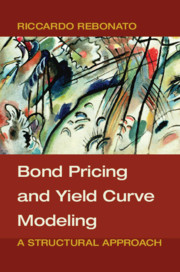Book contents
- Frontmatter
- Dedication
- Contents
- Acknowledgements
- Symbols and Abbreviations
- Part I The Foundations
- Part II The Building Blocks: A First Look
- Part III The Conditions of No-Arbitrage
- Part IV Solving the Models
- Part V The Value of Convexity
- Part VI Excess Returns
- Part VII What the Models Tell Us
- References
- Index
Part VI - Excess Returns
Published online by Cambridge University Press: 25 May 2018
- Frontmatter
- Dedication
- Contents
- Acknowledgements
- Symbols and Abbreviations
- Part I The Foundations
- Part II The Building Blocks: A First Look
- Part III The Conditions of No-Arbitrage
- Part IV Solving the Models
- Part V The Value of Convexity
- Part VI Excess Returns
- Part VII What the Models Tell Us
- References
- Index
Summary
In this part of the book we look at whether any excess returns can be reaped by bearing ‘duration’ risk – or, for that matter, any other yield curve–related risk. If the price of a risky bond reflects a compensation (a premium) over the actuarial expectation of its payoff, then investing in a long bond while financing the position by borrowing at the risk-less short rate should, in the long run, earn a positive compensation – an ‘excess return’. Is this true? If it is, what does the magnitude compensation depend on? What risks are investors paid to bear? Are there no-peek-ahead variables that can tell us when it is a good idea to engage in the buy-long–fund-short strategy?
These are the questions we look at in this part of the book. They have obvious practical relevance. Their answers can also tell us something very important about such fundamental issues as the (local) expectation hypothesis, (ie, the statement that forward rates are unbiased predictors of future rates – and Figure 23.1 explains what we mean when we say that a predictor is biased or unbiased), term premia, whether expectations of long-term inflation are ‘well-anchored’, and the market price of risk in general.
The empirical estimation of excess returns is also extremely important for a structural modelling of the yield curve, because excess returns are directly related to the market price of risk, and the market price of risk is the bridge between the real-world and the risk-neutral description of rates. Structural models are the (sometimes oddly shaped) vessels into which the empirical information about excess returns can be poured.
So, Chapter 23 defines precisely the topic at hand, and introduces the standard notation that will be encountered in the literature. It does so by looking at nominal and real returns. Chapter 24 derives some important implications of the definitions provided in Chapter 23. In Chapter 25 we present our own empirical results on excess results for nominal and real bonds. Chapters 26 and 27 review the recent literature in the area. Next, Chapter 28 looks at different possible explanations of why the return-predicting factor(s) that we identify – such as the slope – should predict at all. Finally, in Chapter 29 we revisit an important topic touched upon in Chapter 27, namely the number and nature of the variables needed to ‘span’ (account for) the observed excess returns.
- Type
- Chapter
- Information
- Bond Pricing and Yield Curve ModelingA Structural Approach, pp. 413 - 414Publisher: Cambridge University PressPrint publication year: 2018



